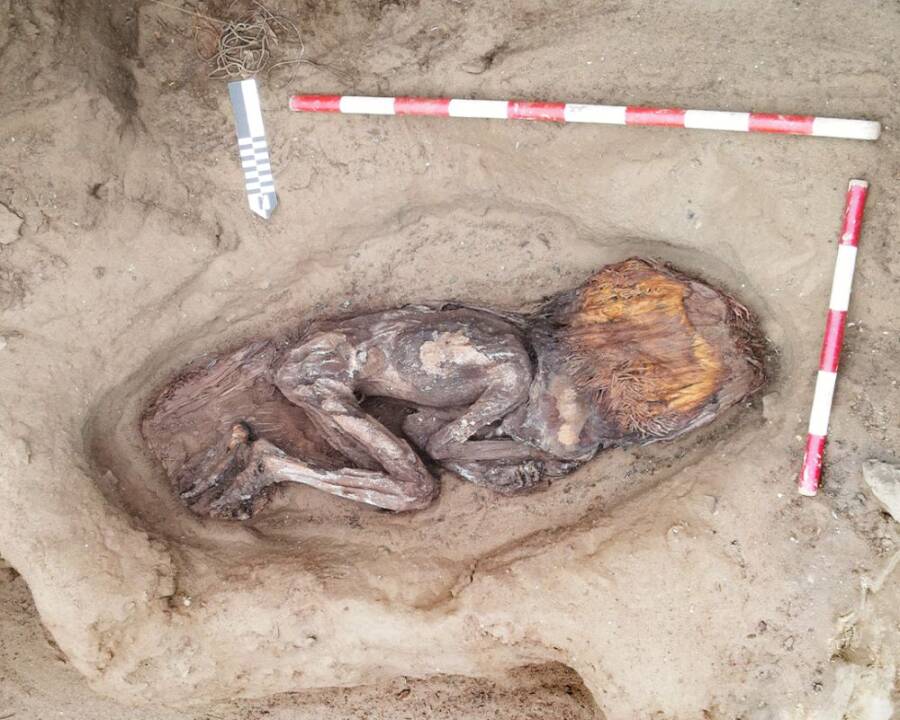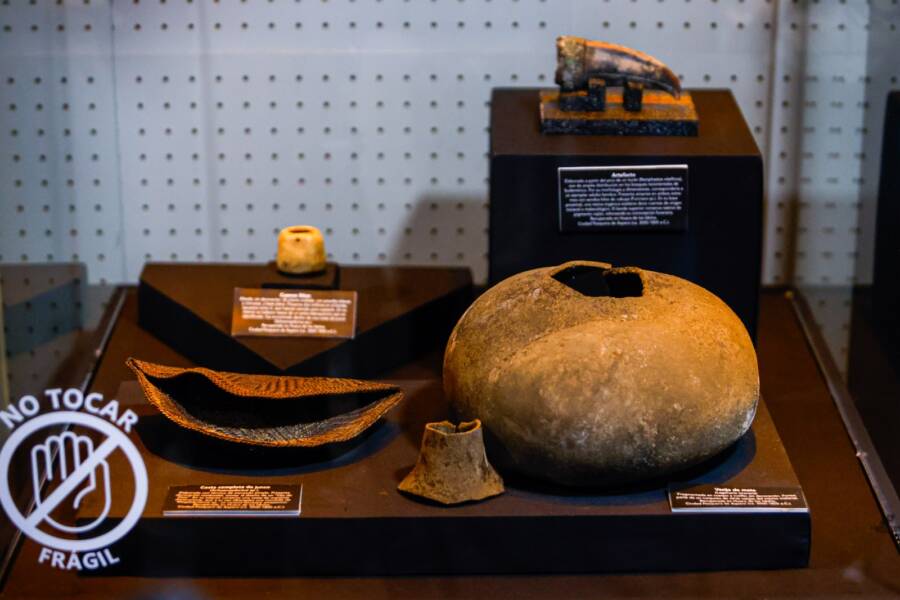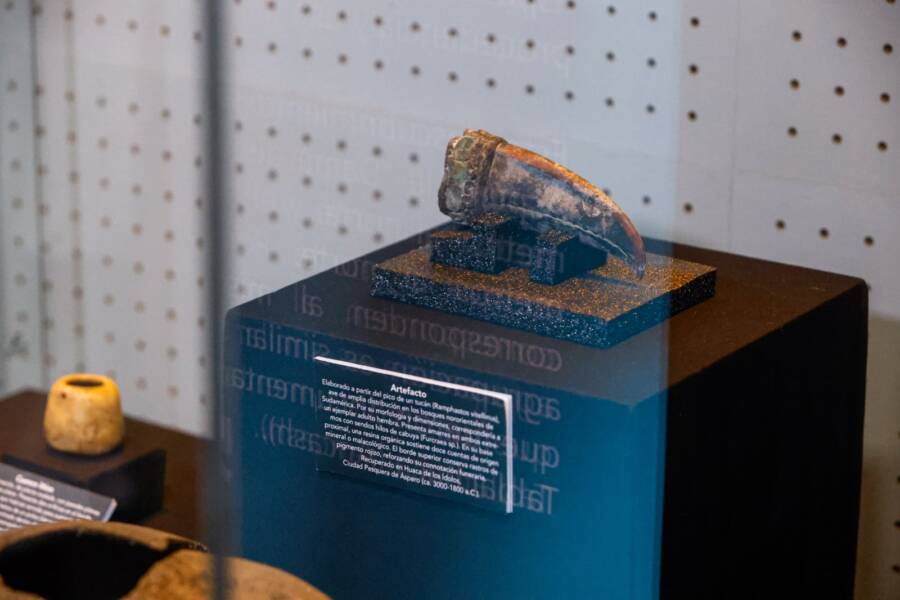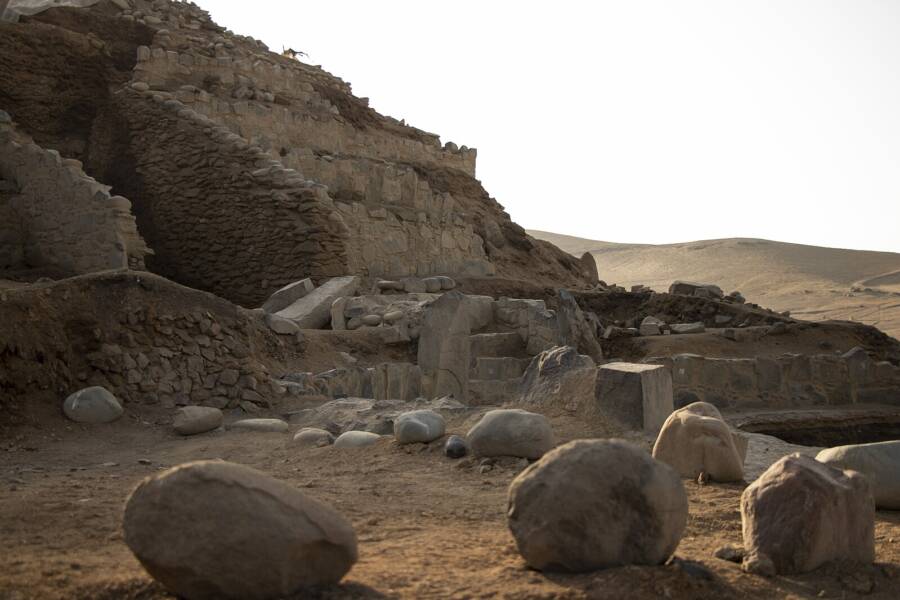The grave was found in the ancient fishing village of Áspero, part of the Caral civilization that thrived in Peru between 3000 and 1800 B.C.E.

Peru Ministry of CultureThe remains of an elite Caral woman who was found wrapped in various textiles.
In the ruins of the ancient town of Áspero in Peru, archaeologists have uncovered the 5,000-year-old grave of a woman from the Caral civilization. Her body was in a state of remarkable preservation, with most of her skin, hair, and nails still intact.
The grave goods buried with the woman are even more extraordinary, however. They include a panel embroidered with macaw feathers, an Amazonian snail shell, and a toucan’s beak inlaid with green and brown beads. Based on the nature of the burial and the artifacts found in the grave, it’s likely that the woman was an elite member of her society, though her identity is unknown.
A multidisciplinary team is now carrying out further analysis to determine how the woman died, what her health was like at the time, the elements of her diet, and the purposes of the recovered objects.
Fascinating Grave Goods From An Ancient Burial In Peru

Peru Ministry of CultureSome of the grave goods found buried alongside the high-status woman.
According to a translated statement from Peru’s Ministry of Culture, archaeologists were carrying out excavations at the Áspero archaeological site when they came across the woman’s body in the public building Huaca de los Ídolos.
Researchers believe the woman was between 20 and 35 years old when she was interred sometime between 3000 and 1800 B.C.E. Her body was wrapped in several materials, including cotton fabrics, reed mats, and netting. A fiber headdress was also placed on her head. Given the age of the body, the fact that she still had intact skin, nails, and hair is exceptional, as remains of that age in the area have typically been reduced to just bones, according to the statement.

Peru Ministry of CultureA close-up view of the decorated toucan beak found in the grave.
The woman was also buried with a variety of grave goods, most notably a panel embroidered with macaw feathers, a toucan’s beak inlaid with green and brown beads, an Amazonian snail shell, and 30 sweet potatoes.
As archaeologist David Palomino told Reuters, “This is an important burial because it has elements that correspond to a woman of high status.”
This adds to the evidence that women played a key role in the ancient Caral civilization.
What Was The Caral Civilization?
The Caral civilization lasted from around 3000 to 1800 B.C.E. — about the same time the Egyptian pyramids were being built. Its central city, Caral, was located about 100 miles north of Lima in the Supe Valley of central Peru, but the society consisted of some 30 interconnected settlements.
One of these was Áspero, where the elite woman’s remains were found. Áspero was located just a half-mile from the Pacific Ocean, and the people who lived there relied heavily on fishing and trade.

Id hiroki/Wikimedia CommonsThe ruins of a building at Áspero, the ancient fishing village where the grave was found.
The Caral people had no known system of writing, so researchers rely on archaeological discoveries to learn about their society. Excavations at Áspero have been ongoing for 20 years, and in that time, experts have uncovered a trove of artifacts that shed light on the ancient civilization.
In 2016, the grave of another woman who also seemingly held a high position in Caral society was uncovered at Áspero. She was buried with a set of carved brooches and became known as the “Lady of the Four Tupus.”
As Palomino told Reuters, the discovery of this most recent grave nearly a decade later only strengthens the evidence that “not only men had an important association in this civilization, but this was also complementary with that of women.”
After reading about the burial site of an elite woman of ancient Peru’s Caral civilization, explore more of the ancient world through 25 photographs of the Aztec pyramids. Then, go inside nine unsolved ancient mysteries that continue to baffle experts to this day.





